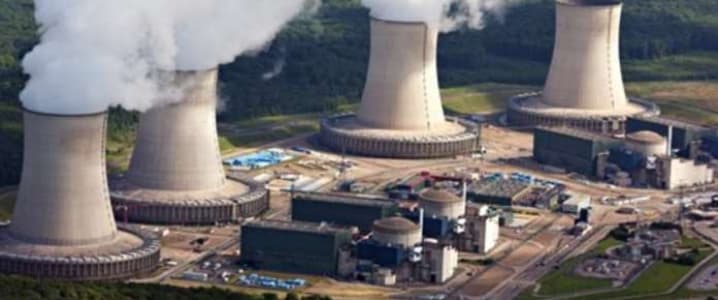The revival of China in economic terms can be seen as one of the greatest success stories in human history. The introduction of the country’s first Special Economic Zone in 1979 near Shenzhen led to unprecedented wealth in the decades that followed. Hundreds of millions of Chinese citizens have been lifted out of poverty, and President Xi Jinping recently announced the intention to eradicate absolute poverty by 2020. Unprecedented economic growth, however, has also created significant challenges such as pollution.
The global supply chain has developed to rely heavily upon China, with the country quickly becoming the ‘factory of the world' – a factory with a large CO2 footprint.
In 2003 China overtook the U.S. as the top producer of greenhouse gasses, and in 2018 the Asian giant surpassed the EU and U.S. combined. Air pollution has reached unsustainable levels for the Asian giant, causing unrest in urban areas where air quality regularly breaches WHO health standards. Driven by this social pressure, Beijing has embarked on an ambitious path to improve air quality and reduce greenhouse gasses.

(Click to enlarge)
China faces significant challenges concerning the reduction of the level of hazardous particles in the air and CO2 emissions while at the same time ensuring energy security. The country is reliant on the import of fossil fuels such as oil and gas but, significantly, not coal. The relatively low price of coal and the abundant availability within its borders has created the world’s largest market for the dirtiest of the fossil fuels. Rampant air pollution, however, is sure to improve the case for non-pollutant sources such as renewables and nuclear.
A nuclear future
Chinese consumption of electricity will roughly double from 2016 to 2040, reaching almost 3,200 GW of installed capacity. It requires a Herculean effort to maintain the ‘golden triangle’ of energy policy planning: energy security (i.e. ensuring a steady and secure supply), improved air quality, and the development of Chinese technologies. Beijing regards its nuclear sector as critical in ensuring this triangle, having already invested significantly to achieve progress.
Currently, 46 reactors are operational in the densely populated and prosperous coastal provinces. The southern province of Guangdong, China's biggest provincial economy as measured by annual gross domestic product, is home to one of the world's most significant clusters of nuclear power plants. Despite a large number of facilities constructed in a relatively short amount of time, China has plans for another eight reactors in the million-kilowatt range. Related: Can Anything Challenge Qatar’s LNG Dominance?
This building and investment frenzy in nuclear technology have created one of the most robust and ambitious nuclear industries in the world. The Chinese have significantly reduced the construction time of a power plant from the global average of 92 months to a mere 60 months.
Furthermore, Beijing is pushing for its nuclear technology to become an export product which can coincide with the demise of the Western appetite for its own nuclear power sector. In the UK, French Areva and Chinese state-controlled ‘China General Nuclear Power Group’, are jointly constructing the £20 billion Hinkley Point C power station in Somerset. Beijing intends to use the facility as a springboard to the rest of the world. According to Zaf Coelho, the director of Asia Nuclear Business Platform, “the massive experience possessed by the Chinese nuclear industry, consistently building for the past 30 years and adopting various next-generation technologies, is being recognized by the global nuclear industry”.
Nevertheless, the focus remains on the Chinese market where most of the growth will be realized in the coming decades. Although currently, plans exist for ‘only' 20 new nuclear power plants, the situation might change to the advantage of the nuclear industry when older coal-fired thermal plants are decommissioned. Regardless of new developments, the future is bright for China's nuclear power industry.

By Vanand Meliksetian for Oilprice.com
More Top Reads From Oilprice.com:
- China Can’t Get Enough Of Brazilian Crude
- Oil & Gas Cash Flow Hits All-Time High
- Oil Prices Spike On Shale Slowdown


















